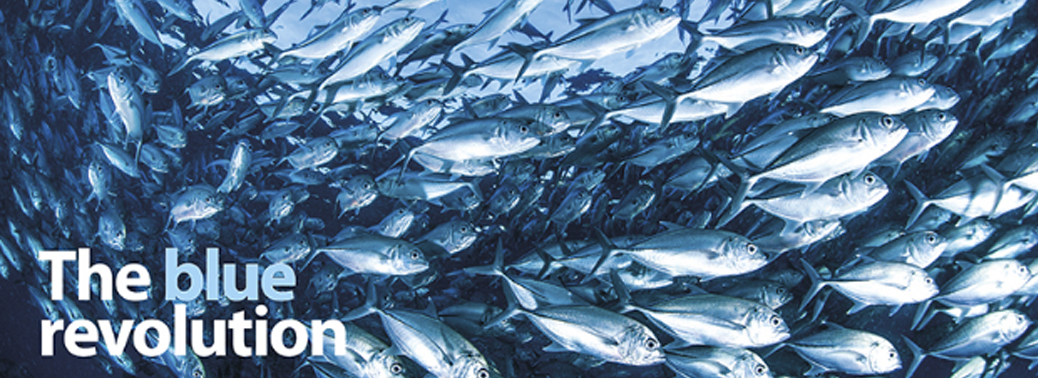BLUE REVOLUTION
13, Feb 2020

Prelims level : Agriculture Ignorance Subsidy Marketing.
Mains level : GS- III Food processing and related industries in India - scope and Significance, Location, Upstream and Downstream Requirements, Supply Chain Management.
Why in News?
- Realizing the immense scope for the development of fisheries and aquaculture, the Government of India has restructured the Central Plan Schemes under an umbrella of the Blue Revolution.
Highlights:
- The major components of the CSS on Blue Revolution scheme are as under:
- Development of Inland Fisheries and Aquaculture
- Development of Marine Fisheries, Infrastructure and Post-harvest Operations
- National Scheme for Welfare of Fishermen.
- Monitoring, Control and Surveillance and other need-based Interventions (MCS).
- Institutional Arrangement for Fisheries Sector
- Strengthening of Database & Geographical Information System of the Fisheries Sector (SoDGIS).
- National Fisheries Development Board and its activities (NFDB).
Outcomes:
- The Blue Revolution in India along with the Fish Farmers Development Agency (FFDA) brought an improvement in the aquaculture and fisheries sector with the introduction of new techniques of rearing, marketing, exporting and fish breeding.
- Some of the major outcomes of the Blue Revolution in India are mentioned below:
- Currently, the Indian Fisheries Sector reached a production of 4.7 million tonnes of fish from a limit of 60,000 tonnes including 1.6 million tonnes of fish from freshwater aquaculture.
- India is recorded to achieve an average annual growth of 14.8% as compared to the global average percentage of 7.5 in the production of fish and fish products.
- The fishery has become India’s largest agricultural export over the last five years with a growth rate of 6% – 10%.
- India has become the world’s second-largest producer of fish with exports worth more than 47,000 crore rupees.
- The Fisheries and aquaculture production contributes 1% and 5% to India’s GDP and Agricultural GDP respectively.






